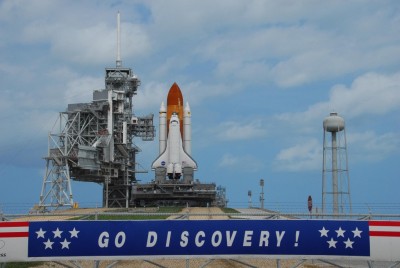 As of the NASA shuttle program home page, the heat shield issue seems no longer to be a show stopper:
As of the NASA shuttle program home page, the heat shield issue seems no longer to be a show stopper:
One of the topics discussed before the conclusion of the program review Wednesday involved the reinforced carbon carbon, or RCC, on Discovery’s wing leading edge panels. In the past, there have been post-flight indications that the edges of a couple of panels have lost small amounts of their upper-level coating. Thermography, or thermal imagery, has been used to inspect the panels in order to identify any internal defects that could lead to coating loss.
The NASA Engineering and Safety Center (NESC) has been working with shuttle engineers to better understand the potential causes of coating loss. At Wednesday’s meeting, NESC recommended replacing three of Discovery’s 44 panels.
Discovery has flown at least twice with these panels in the current condition, and with no indications of degradation based on thermography. At this point, the Space Shuttle Program has determined that Discovery’s astronauts can safely carry out their mission without having to replace the panels.
That sounds to me as clear indication that NASA intends to launch Discovery as is. I speculated about this solution this morning and I am glad to read it now seems to be official policy. Of course, that does not mean Discovery will launch under all circumstances. Space flight is far too risky and something may happen at any instant. After all, we have nearly two weeks of pre-launch activities before us. But it now sounds likely again that there will be a launch — even on-time. So I stop thinking about how to cancel my trip … ;)
